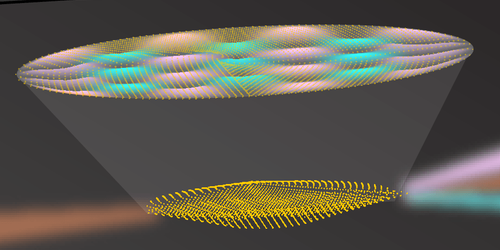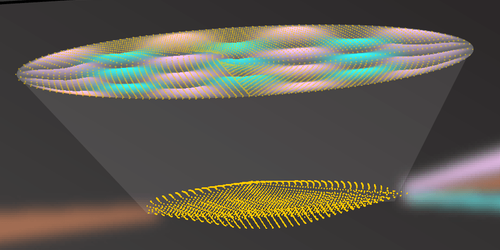Scaling up Storage of Quantum Information
Kevin Cox at the U.S. Army Research Laboratory, Maryland, envisions a quantum network in which quantum information is “painted” onto a “canvas” of atoms, rather than recorded in an array of individual qubits. He and his colleagues set out to create a platform for storing quantum excitations in the form of spin-wave patterns in an ensemble of atoms held within an optical cavity. The team has now demonstrated their technique by storing four independent spin waves this way.
The information storage capabilities of classical computers are traditionally increased by upping the number of bits they contain. Quantum computers can also be scaled qubit by qubit, but quantum superposition—which allows the simultaneous imprinting of multiple quantum excitations on a single group of atoms—permits the use of other possibilities. One of these involves recording information as patterns and connections in a large network, in a manner akin to how information is stored in the human brain. So-called spin-wave multiplexing—where an ensemble of atoms is excited with patterned light—offers a route to achieving this goal.
In their work, Cox and colleagues “imprint” an ensemble of one million atoms with a spin wave—a stream of information stored in the quantum phase pattern of a group of spins—by exciting the atoms with two laser beams. By tuning the angle and phase of the laser beams with respect to one another, the researchers controlled the spin-wave pattern they created. The team showed that they could fit four different spin waves in the cavity but say that with refinements to the technique, they could store as many as 1000 independent spin waves.
This research is published in Physical Review Letters.
–Katherine Wright
Katherine Wright is a Senior Editor for Physics.





